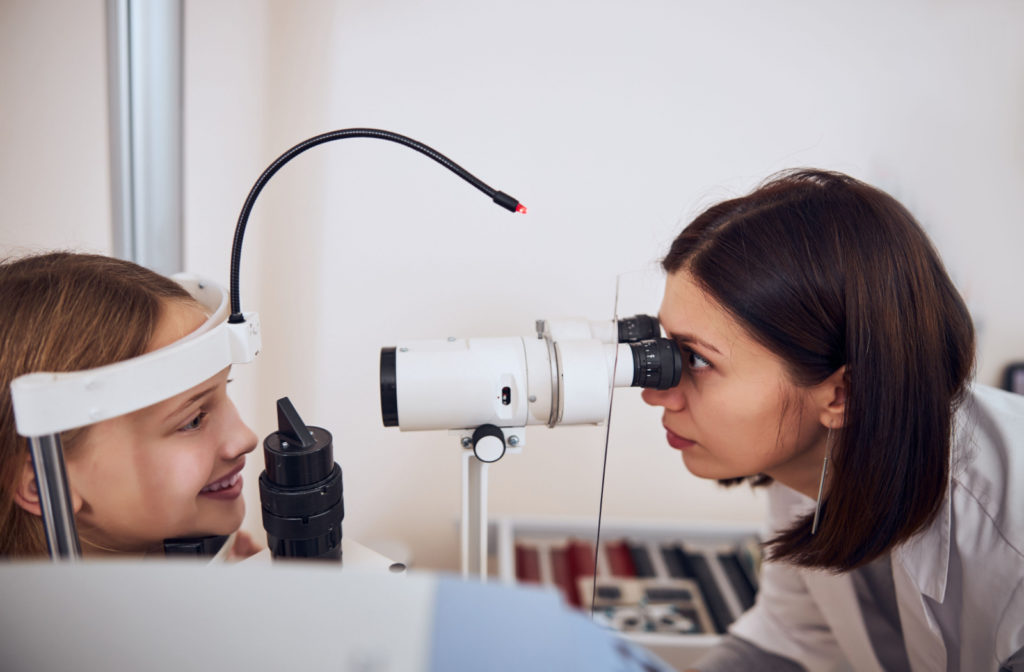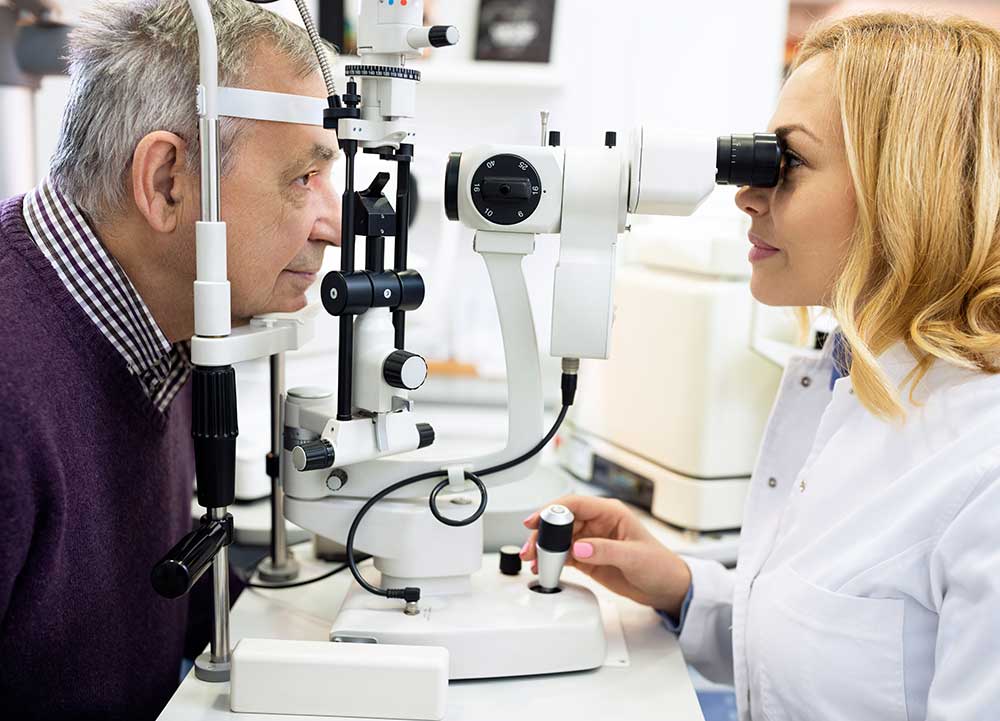Experience Personalized Care with Opticore Optometry in Chino
Experience Personalized Care with Opticore Optometry in Chino
Blog Article
Discovering the Newest Technological Advancements in Optometry and What They Mean for Optometrists
In the ever-evolving field of optometry, recent technical innovations are improving how professionals come close to eye treatment. From the precision of Optical Comprehensibility Tomography to the nuanced understandings offered by AI-driven diagnostic tools, these developments are establishing new standards in person evaluation and treatment. Teleoptometry is positioned to redefine accessibility, ensuring that competence transcends geographical constraints. As these advancements permeate the technique, optometrists are confronted with the difficulty of embracing these devices to boost client end results. The question remains: how will these technical changes redefine the roles and responsibilities within the career?
Innovations in Diagnostic Devices
Advancing the area of optometry, developments in analysis tools have revolutionized the means eye care specialists examine and diagnose visual disabilities and eye conditions. The previous years has seen substantial technical improvements, making it possible for more exact and comprehensive evaluations.
Another trick innovation is the intro of innovative corneal topography systems, which map the surface curvature of the cornea with precision. These tools are particularly beneficial for suitable call lenses and detecting corneal conditions. Additionally, electronic retinal imaging has transformed conventional ophthalmoscopy, using in-depth, panoramic views of the retina that assist in comprehensive aesthetic exams.
The growth of wavefront aberrometry has also been important, allowing the analysis of refractive mistakes with unmatched precision (Opticore Optometry). This modern technology assists in customizing corrective lenses and improving surgical outcomes for refractive surgeries. Collectively, these analysis developments equip eye doctors to supply premium patient treatment, guaranteeing very early intervention and tailored therapy techniques, eventually boosting visual wellness outcomes
AI in Individual Administration
Building on the foundation of advanced analysis tools, the incorporation of man-made intelligence (AI) in client monitoring stands for a transformative leap for optometry. AI systems are significantly used to boost performance, accuracy, and customization in person care.
Additionally, AI-driven platforms assist in streamlined individual interactions and management processes. Automated scheduling, online appointments, and individualized follow-up strategies not just improve patient complete satisfaction yet additionally maximize time administration for professionals. These systems can triage patients based on the necessity of their conditions, guaranteeing that those in critical requirement receive prompt focus.
Furthermore, AI boosts decision-making by supplying eye doctors with evidence-based referrals and treatment paths. By integrating data from digital health and wellness documents, AI devices use understandings that notify scientific decisions, minimizing the danger of mistakes and boosting person end results. As AI remains to develop, its duty in individual administration will likely broaden, reshaping the landscape of optometric treatment.
Developments in Retinal Imaging
In the realm of optometry, retinal imaging has witnessed amazing technological improvements that are improving diagnostic capabilities and person care. Innovations such as Optical Coherence Tomography (OCT) and fundus photography have reinvented how eye doctors evaluate the retina and picture.
Improved imaging techniques like OCT angiography are more refining analysis precision. Eye Doctor. Such developments promote the recognition of min retinal adjustments that might symbolize illness progression.
Moreover, advancements in artificial intelligence are enhancing retinal imaging by making it possible for computerized evaluation of huge datasets. These systems assist eye doctors in recognizing patterns a sign of pathology, consequently boosting analysis accuracy and effectiveness. Collectively, these innovations are transforming retinal imaging into a keystone of contemporary eye treatment, enhancing results and broadening restorative opportunities.
Teleoptometry's Expanding Role
Teleoptometry is significantly coming to be an important part of eye treatment, driven by innovations in electronic communication and diagnostic tools. As optometry embraces electronic change, teleoptometry helps with remote consultations, enabling eye doctors to prolong their services past conventional limits. This is specifically useful in underserved and rural locations where access to specialized eye care is commonly minimal. By leveraging high-resolution video clip conferencing and advanced retinal imaging, optometrists can perform thorough eye exams from afar, making certain timely medical diagnosis and treatment.
The integration of expert system (AI) further enhances teleoptometry, allowing the analysis of visual information and assisting in the detection of eye conditions such as glaucoma and diabetic person retinopathy. AI-powered formulas can rapidly interpret complex imaging information, supplying optometrists with useful understandings that strengthen professional decision-making.
Furthermore, teleoptometry sustains continuity of care via smooth combination with digital health records (EHRs), permitting optometrists to preserve thorough person backgrounds. This guarantees that people obtain regular and personalized treatment also when consulting with various specialists.
In spite of these benefits, challenges remain, including making sure data safety and taking care of person expectations. Nonetheless, teleoptometry represents a substantial stride in the direction of more easily accessible, reliable, and patient-centered eye treatment. As modern technology develops, its role is poised to increase additionally.

Future Fads in Eye Treatment
A myriad of ingenious fads is set to reshape the future of eye treatment, driven by technological improvements and the advancing requirements of individuals. One considerable fad is the integration of synthetic intelligence (AI) in diagnostics, which assures to boost the precision and effectiveness of eye assessments. AI imp source formulas can evaluate large quantities of information from retinal pictures, possibly discovering conditions like diabetic read the article person retinopathy and glaucoma earlier than typical methods.
In addition, personalized medication is obtaining traction in optometry, with hereditary screening notifying personalized treatment strategies. This approach intends to optimize client outcomes by tailoring interventions to specific genetic profiles. Wearable modern technology, such as clever contact lenses, is also coming up, supplying real-time tracking of intraocular pressure or sugar degrees, therefore supplying continual understandings into systemic and ocular health.
The adoption of augmented truth (AR) and virtual fact (VR) in training and person education and learning is another arising pattern. These innovations use immersive experiences that can improve understanding and abilities both for clients and eye doctors. As these fads progress, eye doctors should stay abreast of technological innovations to offer sophisticated care, making sure enhanced client outcomes and satisfaction in the dynamic landscape of eye care.
Conclusion

Jointly, these analysis improvements encourage optometrists to supply premium individual treatment, making certain early treatment and tailored therapy approaches, ultimately boosting visual wellness results.

As these modern technologies continue to advance, eye doctors have to adjust and integrate them right into method, inevitably optimizing workflow performance and raising the standard of eye care delivered to patients.
Report this page